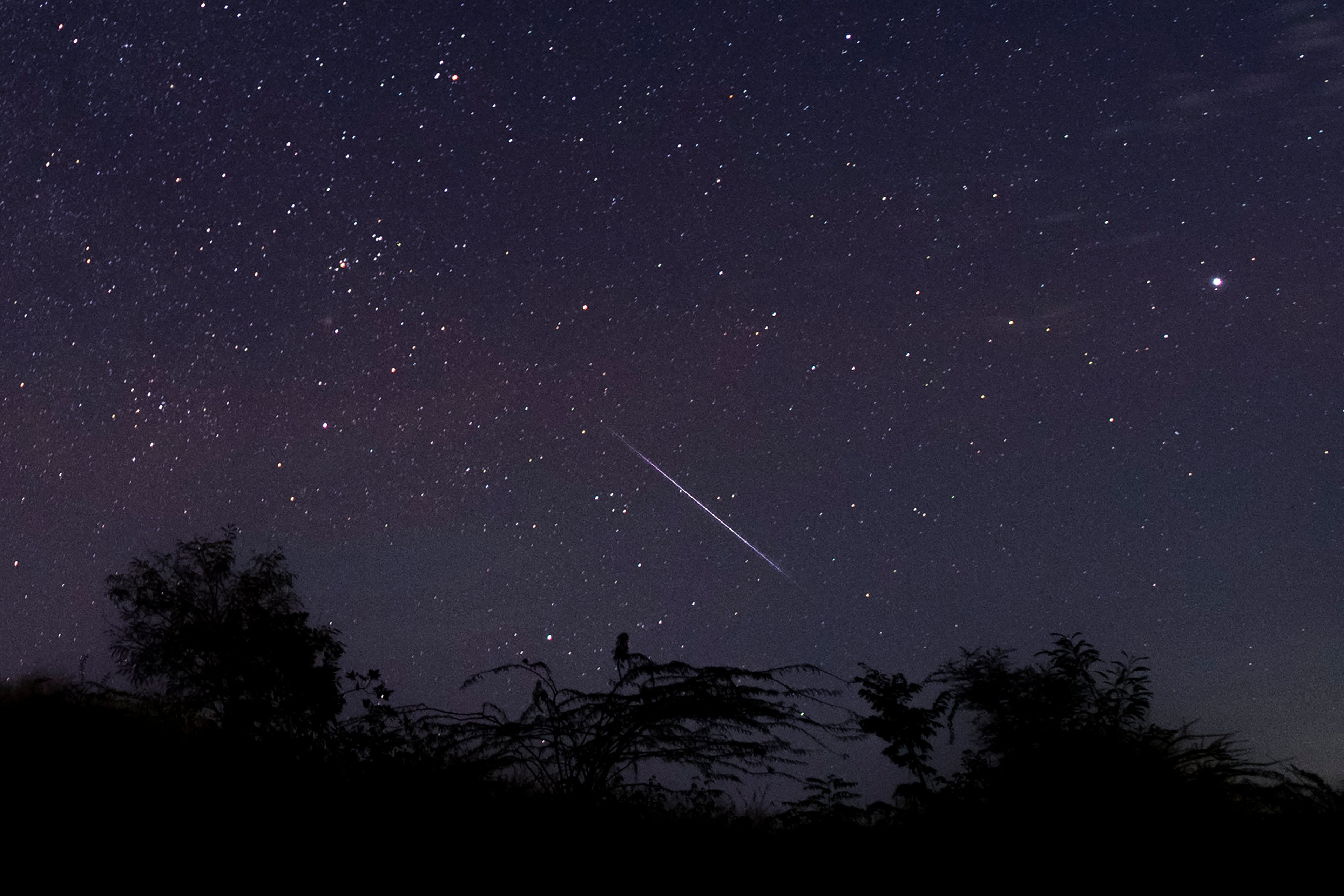
An incredible celestial display of shooting stars will be seen in the night sky on Monday.
The Geminid meteor shower, which returns every December, will treat stargazers to a spectacular show that is expected to peak some time during the night of December 13 and will be visible into the early morning of December 14.
The shower is known to produce more than 100 meteors an hour at its peak, although light pollution and other factors mean that in reality the actual number visible is far fewer.
🌠 The Geminid's Meteor Shower will peak on Dec. 13th, see what else is happening in the sky this month and what to be on the look out for.
— NASA Marshall (@NASA_Marshall) December 10, 2021
More skywatching tips: https://t.co/KMkTqwHBKl pic.twitter.com/th2eXpqV1K
Geminids are very bright, moderately fast, and are unusual in being multi-coloured.
They are mainly white, some yellow and a few green, red and blue, partly caused by the presence of traces of metals like sodium and calcium – the same elements that are used to make fireworks colourful.
The source of the shooting stars is a stream of debris left behind by the asteroid 3200 Phaethon, making this one of the only major showers not to originate from a comet.
According to NASA, Geminids can be seen across most of the world, but are best viewed in the northern hemisphere.
The space agency says that the moon will be 80 per cent full at the peak of the Geminids this year, “which isn’t ideal for our highly regarded meteor shower”.
All hope is not lost however, as NASA adds: “Nevertheless, that bright moon is expected to set around 2:00 a.m. wherever you are located, leaving a couple of hours for meteor watching until twilight.”
The spectacle will be visible with the naked eye, so there’s no need to get out your binoculars or telescope.
Gazing directly at the radiant may limit the number of meteors people can see, so it’s best to look just to the side in a dark area of sky for a better chance of seeing the display.
Stargazers are excited to see this year’s display, with some taking to Twitter to share their snaps of the shower in previous years:
Early next week is the peak of the Geminid meteor shower. The best I ever saw was in 2018, when these 350 meteors were captured in a single morning. pic.twitter.com/fGoXmbze9e
— Kevin Palmer (@krp234) December 7, 2021
Here we go! The #Geminid meteor shower peaks on Dec 13/14! This is *by far* the best annual meteor shower, I've seen it go over 200/h under clear, *dark* skies. Up 70-100/h the night before, 30-50/h two nights before the peak but faint meteors. @StormHour @ThePhotoHour pic.twitter.com/EIgQg8ZKwg
— Jure Atanackov (@JAtanackov) December 9, 2021
The #Geminid meteor shower is expected to peak on December 13-14. This year, a waxing gibbous moon will be above the horizon. But it'll set shortly afterwards, leaving the sky dark for watching meteors: https://t.co/DQVSBlKEKY.
— EarthSky (@earthskyscience) December 9, 2021
Will you be watching?
📸 Thanks, John Ashley! pic.twitter.com/j45NZ7t9fx
FYI, this is now less than a week away! One of the best of the year, the #Geminid meteor shower can produce a ton of meteors! Early Tuesday morning before dawn is your best bet! #mawx #meteorshower pic.twitter.com/O70rdI7oK8
— Janna Brown (@MetJannaBrown) December 8, 2021
“Rich in green-colored fireballs, the Geminids are the only shower I will brave cold December nights to see,” said Bill Cooke, lead for NASA’s Meteoroid Environment Office.
Will you also brave the cold tomorrow night?
Additional reporting by PA.







